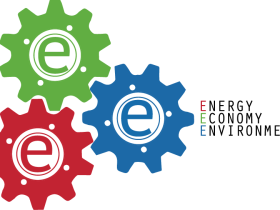1200MW Budhigandaki Hydropower Company Limited (Notebook):
- Budhi Gandaki Hydroelectric Project Prefeasibility Study Vol. I Main Report (Published by His Majesty’s Government of Nepal, Ministry of Water Resources, Electricity Department, April 1984)
- Decision Making in the Electricity Bureaucracy: Case of Budhi Gandaki (By Prabesh Paudyal and Bashanta Dhoj Shrestha)
- Feasibility Study And Detailed Design Of Budhi Gandaki Hpp, Phase 3: Final Detailed Design Report, Volume 1. Main Report (Prepared by TRACTEBEL Engineering/JADE Consult)
- Budhigandaki Hydroelectric Project is Unlikely to be Implemented as Recommended by Tractebel Engineering (Authored by Dr. Hari Man Shrestha)
- बुढीगण्डकी जलाशययुक्त जलविद्युत् आयोजना लगानीको खाका तयार गर्न गठित समितिको प्रतिवेदन २०७४ (Report of the Committee formed to prepare the investment framework for the Budhigandaki Reservoir Hydropower Project 2074)
- कम्पनी ऐन, २०६३ अन्तर्गत संस्थापित बुढीगण्डकी जलविद्युत कम्पनी लिमिटेडको नियमावली, २०७९ (The Bylaws of Budhigandaki Jalbidhyut Company Limited established under the Companies Act, 2063 (2079))
- Feasibility Study And Detailed Design Of Budhi Gandaki Hpp, Public Consultation And Disclosure Plan (Pcdp) (Prepared by TRACTEBEL Engineering/JADE Consult in association with NESS)
- बुढीगण्डकी जलविद्युत कम्पनी लिमिटेडको प्रवन्धपत्र (Memorandum of Association of Budhigandaki Jalbidhyut Company Limited)
Comprehensive Chronology of the 1200 MW Budhigandaki Hydroelectric Project
| Timeline | Event / Milestone | Key Developments & Context |
|---|---|---|
| ~1984 | First feasibility study conducted. | Project concept identified. [12] |
| 2015 | Detailed Project Report (DPR) Finalized by Tractebel Engineering (France). | Technical Profile: 263m double-curvature arch dam, 1200 MW capacity, 3,383 GWh annual output (1,408 GWh in dry season). [1, 9, 10, 23] Dam location: Gorkha & Dhading districts, 2 km upstream from Budhigandaki-Trishuli confluence. [9] Seismic Risk: Located in a highly active seismic zone. The 263m arch dam is a high-risk choice for “fragile Himalayan geology.” [11, 22] Environmental Impact: Reservoir will submerge 63 km², including ~2,400 hectares of forest (~3.5M trees) and 2,566 hectares of cultivable land. Habitat for 38 plant, 19 mammal, 9 reptile, and 54 bird species will be inundated. [9, 11, 16] Economic Viability Critique: Dr. Hari Man Shrestha’s analysis argues the project is “clearly unfeasible” [20]. The DPR was criticized for underestimating costs (excluding 29% for environment & contingency) and overestimating benefits by using expensive Heavy Fuel Oil plant avoidance, inflating the benefit rate to 23.45 cents/kWh. The actual cost of power is estimated at Rs 10 per unit. [20, 33] Strategic Importance & Flaw: The project is a “game-changer” for energy security, solving dry-season power deficits [24, 25]. However, it fails to monetize significant downstream benefits to India from regulated dry-season flow, a major bilateral economic negotiation failure. [20, 24] |
| 2015-16 | Government levies Petroleum Infrastructure Tax. | A domestic funding mechanism is created specifically for Budhigandaki. [8] However, over the next 8 years, over Rs 100 billion collected is diverted to the general treasury, destroying the original funding model. [8, 30] |
| May/Jun 2017 | Pushpa Kamal Dahal (Maoist Centre) government awards project to China Gezhouba Group (CGGC) without competitive bidding. | Initiation of the controversial “EPCF” (Engineering, Procurement, Construction, Financing) model, leading to allegations of non-transparency and corruption. [31, 41] This move creates geopolitical concerns, as India has a policy of not buying power from Chinese-built projects. [47] |
| Nov 2017 | Sher Bahadur Deuba (Nepali Congress) government scraps the CGGC deal. | First major policy reversal, citing “irregularities and lack of transparency.” [31] |
| Sep 2018 | KP Sharma Oli (UML) government re-awards the project to CGGC. | Second major policy reversal, reviving the Chinese EPCF model. [8] |
| 2019 | Government fixes land compensation rates. | Compensation rates set from Rs 50,000 to Rs 700,000 per anna (31.8 sq m) for registered landowners. [34] |
| Apr 2022 | Sher Bahadur Deuba (Congress-led coalition) scraps the CGGC deal for the final time. | Definitive Pivot to Domestic Development. A strategic de-risking to ensure future power exports to India and Bangladesh by removing the “Chinese-built” label. [8, 47] The state-owned Budhigandaki Company Limited is established to develop the project. [8, 13] |
| 2022-2023 | Budhigandaki Company Limited is formally established. | Domestic development path is formalized. [13] Land acquisition progress reaches ~90-95% for private land, with ~Rs 42-43 billion disbursed. [1, 13] However, a “two-tiered” social crisis emerges: registered landowners are compensated, but over 100 tenants and 150 families on state land remain uncompensated with no clear rehabilitation plan. [16] |
| 2024 | Budhigandaki Company prepares two investment modality options. | Option 1: 25% Equity / 75% Debt (No VGF). Option 2: 30% Equity / 70% Debt (with Rs 73B Viability Gap Funding). [1, 5] Cost estimates vary from Rs 310 billion (with VGF) to Rs 398 billion (without VGF). [14] |
| Aug 2025 | Separate Project: 341 MW Budhigandaki (private) reaches financial closure. | This private venture by Sahas Urja Limited secures Rs 52.5 billion from domestic banks, demonstrating the banking sector’s appetite for large-scale hydro, but is a distinct project from the national 1200 MW endeavor. [17] |
| Nov 2025 (Current Status) | Minister Kulman Ghising’s Directive to break the deadlock. | Revised Project Cost: USD 2.77 billion (Rs 332 billion). This is a “politically managed investable cost” that assumes the government absorbs Rs 42B+ in sunk land costs and provides tax waivers. [1] Proposed Investment Modality: 50% Equity / 50% Debt. Equity to be raised from ring-fenced Petroleum Tax, NEA shares, EPF, CIT, Nepal Telecom, and a public IPO. [1, 4] This is a state-led solution, acknowledging the project is strategically essential but commercially unviable. [1, 8] Socio-Environmental Crisis Deepens: The “frozen” land has created a “zombie economy,” trapping ~50,000 affected people who cannot sell land or get loans. Historic markets like Arughat have seen a 70% business drop. The local population faces “endless suffering,” urging the government to either build the project or release their lands. [36, 37] Conclusion & Path Forward: The project is in a “must-build” scenario after Rs 42B+ in sunk costs. Success hinges on the government’s financial will to fund the equity and resolve outstanding social grievances. [1, 8, 36] |
Reference Links
- Budhigandaki Hydropower cost revised to USD 2.77 … – Nepal News, accessed November 8, 2025, https://english.nepalnews.com/s/business/budhigandaki-hydropower-cost-revised-to-usd-2-77-billion/
- Budhigandaki breaks deadlock: Construction to kick off in 2025 – Bizness News English, accessed November 8, 2025, https://english.biznessnews.com/posts/budhigandaki-breaks-deadlock-construction-to-kick-off-in-2025
- Budhi Gandaki hydropower project: Minister Ghising urges immediate finalization of US $2.77 billion investment modality – clickmandu, accessed November 8, 2025, https://english.clickmandu.com/2025/11/4625/
- Kulman Ghising Calls for Immediate Action on Budhigandaki Project Financing, accessed November 8, 2025, http://www.nepalenergyforum.com/kulman-ghising-calls-for-immediate-action-on-budhigandaki-project-financing/
- Fix investment modality for 1200 MW Budhigandaki hydropower project: Minister Ghising, accessed November 8, 2025, https://laganinews.com/en/2025/11/05/fix-investment-modality-for-1200-mw-budhigandaki-hydropower-project-minister-ghising-2/
- Government begins planning cost-effective investment for Budhigandaki Hydropower, accessed November 8, 2025, https://english.nepalnews.com/s/business/government-begins-planning-cost-effective-investment-for-budhigandaki-hydropower/
- NEA Takes Steps to Move Budhigandaki Hydro Project Forward | NepalEnergyForum, accessed November 8, 2025, http://www.nepalenergyforum.com/nea-leaders-visited-budhigandaki-hydro-project-site-to-take-forward-the-project/
- Funding Budhi Gandaki harder than opening project office – The Kathmandu Post, accessed November 8, 2025, https://kathmandupost.com/national/2023/07/20/funding-budhi-gandaki-harder-than-opening-project-office
- ESIA of Budhi Gandaki Hydroelectric Project (1200 MW) 2016 PDS | PDF – Scribd, accessed November 8, 2025, https://www.scribd.com/document/891907447/11-ESIA-of-Budhi-Gandaki-Hydroelectric-Project-1200-MW-2016-PDS
- Feasibility Study, Detail Design, and ESIA of Budhi Gandaki Hydroelectric Project (1200 MW) – Jade Consult, accessed November 8, 2025, https://jadeconsult.com.np/arun-3-hpp-33kv-tl-project/
- Upcoming Construction Project in Nepal: Budhigandaki Hydropower – Gothalo Service, accessed November 8, 2025, https://gothalo.wuaze.com/upcoming-construction-project-nepal-bgjcl/
- Budhigandaki Hydroelectric Project – Wikipedia, accessed November 8, 2025, https://en.wikipedia.org/wiki/Budhigandaki_Hydroelectric_Project
- Budhigandaki project unable to meet recurrent expenses | The Annapurna Express, accessed November 8, 2025, https://theannapurnaexpress.com/story/49373/
- Gandaki: The Future Hub of Hydroelectric Power | NepalEnergyForum, accessed November 8, 2025, http://www.nepalenergyforum.com/gandaki-the-future-hub-of-hydroelectric-power/
- Budhi Gandaki: Nepal’s mega-dam remains a mirage | Dialogue Earth, accessed November 8, 2025, https://dialogue.earth/en/water/budhi-gandaki-nepals-mega-dam-remains-a-mirage/
- Nepal: Budhi Gandaki hydro project in limbo as questions of resettlement, compensation and environmental impact remain unanswered – Business & Human Rights Resource Centre, accessed November 8, 2025, https://www.business-humanrights.org/en/latest-news/nepal-budhi-gandaki-hydro-project-in-limbo-as-questions-of-resettlement-compensation-and-environmental-impact-remain-unanswered/
- Sahas Urja’s 341 MW Budhigandaki Hydropower Project Reaches Financial Closure with Rs. 52.5 Billion Loan from 10 Banks – || ShareSansar ||, accessed November 8, 2025, https://www.sharesansar.com/newsdetail/sahas-urjas-341-mw-budhigandaki-hydropower-project-reaches-financial-closure-with-rs-525-billion-loan-from-10-banks-2025-08-08
- 341 MW Budhigandaki hydropower project is being built at a cost of 70 billion- अर्थ / वाणिज्य, accessed November 8, 2025, https://ekantipur.com/business/2024/11/22/en/341-mw-budhigandaki-hydropower-project-is-being-built-at-a-cost-of-70-billion-11-05.html
- Budhi Gandaki Hydro in Nepal: BRI Project from the Previous Century, accessed November 8, 2025, https://www.transrivers.org/2017/2116/
- Budhigandaki Hydroelectric Project is Unlikely to be … – SciSpace, accessed November 8, 2025, https://scispace.com/pdf/budhigandaki-hydroelectric-project-is-unlikely-to-be-559pj5hqig.pdf
- Budhi Gandaki Hydropower Project will be built at any cost: PM Dahal, accessed November 8, 2025, https://www.urjakhabar.com/en/news/2007537262
- Structural stability analysis of proposed Budhi Gandaki dam and optimization, accessed November 8, 2025, https://www.nepjol.info/index.php/jiee/article/download/47802/46477/181911
- Salient Features | Budhigandaki Jalbidhyut Company Limited, accessed November 8, 2025, https://bgjcl.com/pages/salient-features
- Reservoir Sustainability of Budhigandaki Hydropower Project by using HECRAS5.1, accessed November 8, 2025, https://www.researchgate.net/publication/362020807_Reservoir_Sustainability_of_Budhigandaki_Hydropower_Project_by_using_HECRAS51
- Top 10 Facts You Need to Know About Nepal’s 1200 MW Budhigandaki Hydropower Project, accessed November 8, 2025, https://english.nepalnews.com/s/nepal-facts/top-10-facts-you-need-to-know-about-nepals-1200-mw-budhigandaki-hydropower-project/
- Budhi Gandaki Final Detailed Desing Report | PDF | Hydroelectricity …, accessed November 8, 2025, https://www.scribd.com/document/510538135/Budhi-Gandaki-Final-Detailed-Desing-Report
- 1200 MW Budhigandaki: Investment model in 12 years- समाचार – ekantipur, accessed November 8, 2025, https://ekantipur.com/news/2024/03/29/en/1200-mw-budhigandaki-investment-model-in-12-years-43-44.html
- Budhi Gandaki development modality ready | The Annapurna Express, accessed November 8, 2025, https://theannapurnaexpress.com/story/48147/
- 1200 MW Budhigandaki: Investment model in 12 years- समाचार – ekantipur, accessed November 8, 2025, https://ekantipur.com/en/news/2024/03/29/1200-mw-budhigandaki-investment-model-in-12-years-43-44.html
- Govt collects Rs 100 billion through infrastructure tax imposed on fuel in past eight years, accessed November 8, 2025, https://myrepublica.nagariknetwork.com/news/govt-collects-rs-100-billion-through-infrastructure-tax-imposed-on-fuel-in-past-eight-years
- Communists propose, Congress disposes: What you need to know …, accessed November 8, 2025, https://www.nepallivetoday.com/2022/04/08/communists-propose-congress-disposes-what-you-need-to-know-about-the-fate-of-budhi-gandaki-hydro-project/
- Budhigandaki Hydroelectric Project is Unlikely to be Implemented as Recommended by Tractebel Engineering | Hydro Nepal: Journal of Water, Energy and Environment, accessed November 8, 2025, https://www.nepjol.info/index.php/HN/article/view/13267
- Cost price of Budi Gandaki Rs 10 per unit | NepalEnergyForum, accessed November 8, 2025, http://www.nepalenergyforum.com/cost-price-of-budi-gandaki-rs-10-per-unit/
- Land compensation amount fixed for Budhi Gandaki project – The Kathmandu Post, accessed November 8, 2025, https://kathmandupost.com/money/2019/12/02/land-compensation-amount-fixed-for-budhi-gandaki-project
- Locals protest land compensation in Budhigandaki hydel-affected areas, accessed November 8, 2025, https://thehimalayantimes.com/nepal/locals-protest-land-compensation-in-budhigandaki-hydel-affected-areas
- Budhigandaki project delay freezes locals’ land and options, accessed November 8, 2025, https://kathmandupost.com/gandaki-province/2025/07/15/budhigandaki-project-delay-freezes-locals-land-and-options
- Arughat market is becoming deserted due to the confusion of the Budhigandaki project- अर्थ / वाणिज्य – ekantipur, accessed November 8, 2025, https://ekantipur.com/en/business/2024/11/24/arughat-market-is-becoming-deserted-due-to-the-confusion-of-the-budhigandaki-project-19-14.html
- Govt asked to scrap Budhi Gandaki deal with Chinese firm – The Kathmandu Post, accessed November 8, 2025, https://kathmandupost.com/national/2017/09/26/govt-asked-to-scrap-budhi-gandaki-deal-with-chinese-firm
- ‘Scrap decision to award Budhi Gandaki to Chinese firm’ – myRepublica, accessed November 8, 2025, https://myrepublica.nagariknetwork.com/news/scrap-decision-to-award-budhi-gandaki-to-chinese-firm
- Nepal refuses China’s offer to fund multi-billion dollar power project – Hindustan Times, accessed November 8, 2025, https://www.hindustantimes.com/world-news/nepal-refuses-china-s-offer-to-fund-multi-billion-dollar-power-project/story-cfRJPHSKJkn2gqyon7anUL.html
- Govt scraps Budhigandaki deal with Chinese contractors – The Himalayan Times, accessed November 8, 2025, https://thehimalayantimes.com/nepal/govt-scraps-budhi-gandaki-deal-chinese-contractors
- Nepal Revives $2.5 Billion Hydro Power Plant Project Deal With China – NDTV, accessed November 8, 2025, https://www.ndtv.com/world-news/nepal-revives-2-5-billion-hydro-power-plant-project-deal-with-china-1921575
- Repeated Mistake: Budhi Gandaki Hydro again awarded to China Gezhouba without free competition, accessed November 8, 2025, https://www.transrivers.org/2018/2385/
- Who pocketed nine billion rupees commission in Budhi Gandaki Project? – myRepublica, accessed November 8, 2025, https://myrepublica.nagariknetwork.com/news/who-pocketed-nine-billion-rupees-commission-on-budhi-gandaki-project
- Government mulls allowing NEA to develop the 1200 MW project | The Annapurna Express, accessed November 8, 2025, https://theannapurnaexpress.com/story/40299/
- Construction of Budhigandaki Hydropower Project Uncertain due to Failure in Finalizing Investment Modality – Business Age, accessed November 8, 2025, https://www.newbusinessage.com/news/42396/construction-of-budhigandaki-hydropower-project-uncertain-due-to-failure-to-finalize-investment-modality/
- Indian developers replace Chinese on some of Nepal’s largest hydro projects, accessed November 8, 2025, https://dialogue.earth/en/energy/indian-developers-replace-chinese-some-of-nepals-largest-hydropower-projects/
- Nepal’s budget focuses on hydropower, electricity export to Bangladesh begins from next year – ThePrint, accessed November 8, 2025, https://theprint.in/world/nepals-budget-focuses-on-hydropower-electricity-export-to-bangladesh-begins-from-next-year/2105765/
- Power-purchase deal pleases private sector – The Rising Nepal, accessed November 8, 2025, https://risingnepaldaily.com/news/37229
1. Early Identification and Initial Feasibility (1966–1985)
The conceptual origins of the Budhi Gandaki Hydroelectric Project trace back to 1966, when Dr. Hari Man Shrestha first identified the project during his Ph.D. research at the Moscow Power Institute, estimating Nepal’s theoretical hydropower potential at 83,000 MW. Two years later, in August 1968, he presented his findings at the VII World Power Conference in Moscow, marking the earliest documented reference to the Budhi Gandaki scheme.
In the 1970s, the project gained institutional recognition through the Gandaki Basin Study and the Master Plan of Hydroelectric Power Development in Nepal (1974, prepared by JICA). By 1978, the Snowy Mountains Engineering Corporation (SMEC) submitted a report to His Majesty’s Government of Nepal (HMG/N), screening potential sites within the Gandaki Basin—identifying Burhi Gandaki as one of the most promising.
SMEC’s 1979 Gandaki River Basin Power Study recommended constructing a 225-meter earth and rockfill dam with an installed capacity of 500 MW. Subsequently, in 1982, HMG/N’s Electricity Department launched prefeasibility studies for selected sites, officially initiating the Burhi Gandaki Prefeasibility Study on November 26, 1982.
The 1984 Prefeasibility Study Report (Vol. I) recommended a 225 m high rockfill dam with clay core, a 600 MW capacity, and a Full Supply Level (FSL) of 520 m. This report effectively established the project’s modern technical parameters. A year later, in 1985, the Arughat Small Hydropower Project was established to supply Arughat Bazar, representing the first localized power initiative in the region.
2. International Engagement and Project Shelving (1990–2011)
The project re-emerged in 1990, when India expressed interest following Nepal’s political transition. During Prime Minister Chandra Shekhar’s visit, discussions began on potential bilateral cooperation. In April 1991, the Second Meeting of the Indo-Nepal Sub-Commission on Multiple Uses of Water Resources formally discussed the project. Later that year (December 1991), Nepal’s Prime Minister G. P. Koirala and Indian counterparts agreed to complete field surveys by June 1992 and prepare a Detailed Project Report (DPR) to enable construction by 1994.
However, during the joint expert meeting (Feb 24–27, 1992), disagreements arose over the modality of DPR preparation—India’s proposal to lead the DPR from its own government office on a turn-key basis was unacceptable to Nepal. Consequently, the project was shelved.
Despite several revival intentions in 1996, 2004, and 2007, none materialized. The project resurfaced only after the 2010/11 energy crisis, when the Nepal Electricity Authority (NEA) reinitiated studies due to the project’s strategic proximity to Kathmandu. In mid-2011, the 10-Year Hydroelectric Project Development Planning Task Force projected pre-construction by 2013, construction by 2014, and completion by 2018. NEA also reviewed the prefeasibility study and proposed an alternative layout (Option 3: Powerhouse in Phisling).
3. Tractebel Feasibility and Detailed Design (2012–2015)
A major breakthrough occurred in December 2012, when NEA awarded the Feasibility Study, Detailed Design, and Tender Document contract to Tractebel Engineering SA (France) in association with JADE Consult Pvt. Ltd. (Nepal). Work formally commenced on February 1, 2013, with a 30-month schedule.
Between 2013 and 2014, extensive field reconnaissance, environmental and socioeconomic surveys, and public consultations were conducted. The Public Consultation and Disclosure Plan (PCDP) was first submitted in February 2014, and by March 21, 2014, the Budhigandaki Hydroelectric Project Development Committee (BGHPDC) approved Option 1 (Powerhouse at Dam Toe) as the final design layout.
Key submissions followed:
- Phase 1 Design Concept Report (March 2014)
- Draft Final Feasibility Report (Nov 1, 2014)
- Final Feasibility Report (Feb 1, 2015)
The Government of Nepal approved the ToR and Scoping Documents in April 2015. Although the April 25, 2015 earthquake delayed progress, subsequent activities included census surveys (Dhading and Gorkha), data analysis, hydraulic model visits, and restructuring of tender documents into three lots (Preparatory Works, Dam Structures, Power Plant & Waterways).
By November 2015, Tractebel completed the Detailed Project Report (DPR), Environmental and Social Impact Assessment (ESIA), and Final Field Investigation Report. Around 2015–2016, the government introduced a Petroleum Infrastructure Tax (Rs 5 per liter) to mobilize domestic capital for the project, setting a 2016 target for construction initiation.
4. Contractual and Political Turmoil (2017–Present)
The project entered a turbulent phase marked by political shifts and contractual reversals. In May 2017, the Dahal (Maoist) government awarded the project to China Gezhouba Group Corporation (CGGC) under a no-bid Engineering, Procurement, Construction and Financing (EPCF) model. A Memorandum of Understanding (MoU) followed on June 4, 2017.
However, in November 2017, the Deuba (Congress) government scrapped the CGGC deal, citing procedural irregularities—marking the first policy reversal. In September 2018, the Oli (UML) government re-awarded the project to CGGC, only for the Deuba government in April 2022 to cancel the agreement again, this time definitively—leading to the project’s pivot toward a domestic model.
During this phase, progress shifted toward institutional consolidation. The Budhigandaki Hydropower Company Limited (BJCL) was established in 2022–2023 to implement the project domestically. Subsequent milestones include:
- Notices on compensation distribution in Dhading (June 2021)
- BJCL Annual Report 2079/80 (2022)
- Publication of BJCL’s Articles of Association and Regulations (Sept 3, 2024)
- Recruitment notices, interviews, and CEO selection process (2024–2025)
In November 2025, Minister Kulman Ghising urged the finalization of the investment modality, emphasizing a state-led model with 50% equity and 50% debt, signaling a potential resolution of the long-standing financial impasse. The construction start remains targeted for 2025.
Chronological Summary
Period | Key Developments |
1966–1985 | Project identified by Dr. Hari Man Shrestha; feasibility by SMEC and JICA; 600 MW concept finalized (1984). |
1990–2011 | Bilateral talks with India fail; project shelved; revived by NEA after 2010 energy crisis. |
2012–2015 | Tractebel completes Feasibility and DPR; earthquake delays; Petroleum Tax introduced to fund project. |
2017–2025 | Project repeatedly awarded and canceled with CGGC; domestic BJCL established; state-led model. |









Leave a Reply